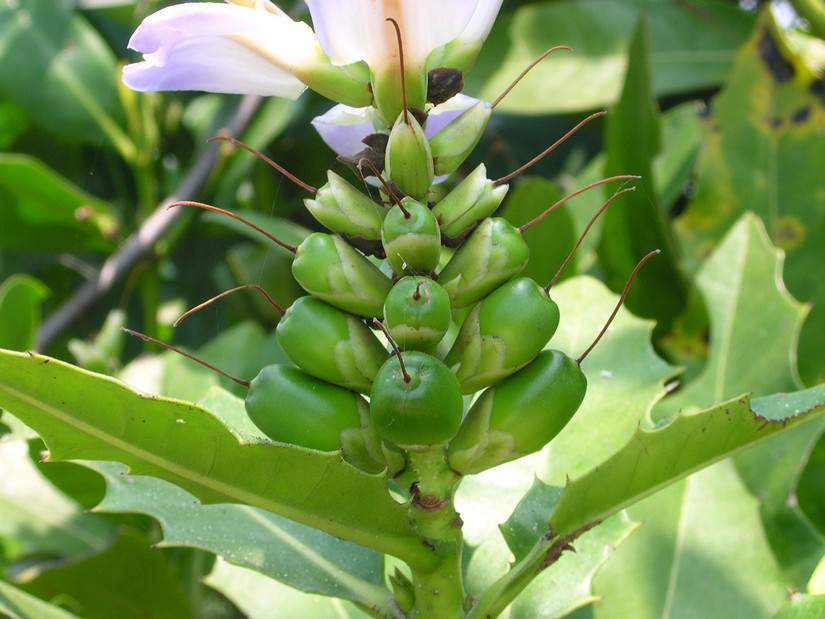March

From dawn to dusk, we live our lives around daily cycles. In the intertidal wetlands, organisms that live here follow daily cycles of tide. Tide in, tide out, the cycle of nature shapes the intertidal lives. Here in the Hong Kong Wetland Park, the ups and downs of the Mangrove Boardwalk is brought by the daily change of tide.
Take a stroll to the boardwalk. As Spring comes you can see the blooming flowers of Acanthus ilicifolius on both sides of the boardwalk. Its purplish-white flowers are graceful and attractive. As we take a closer look, the elongated inflorescence grows at the top of the branches in the shape of a spike (see 'terminal spike' in Flower of February). Unopened flowers are tube-shaped with a purplish top. Flowers in full bloom show the purplish white labium (i.e. lower lip of a lip-shaped corolla) with four stamens.
Apart from the graceful flowers, Acanthus has extraordinary leaves - leathery leaves with spiny lobes, which look like the holly leaves we used in Christmas decorations. In fact, 'ilicifolius' in the Latin name means 'leaves (folia) that resemble holly (Ilex)'. However, the shape of leaves can vary significantly, as new leaves are usually larger with no lobes around the edges (i.e. 'entire' leave margin). You may find entire, lobed, and coarsely lobed leaves on the same plant. This variation between young and old leaves is common in plants (e.g. Alangium chinense).
Besides its flowers and leaves, Acanthus has fruits of a peculiar shape that gives the plant its Chinese name, meaning 'rats'. Click on the photo on the right and see what they look like. You have to visit the Park again in mid-summer to see the real fruits.
The platforms at both ends of the Mangrove Boardwalk are ideal spots for taking photos. Here you can see Acanthus growing at the margin of the mangroves, backed by tall mangrove trees such as Bruguiera gymnorhiza and Kandelia obovata. Unlike the mangroves that live exclusively in intertidal areas, Acanthus is mostly found near shore. It is now classified as a 'mangrove associate', to differentiate from the 'true mangroves' that possess various adaptations for the harsh intertidal environment.